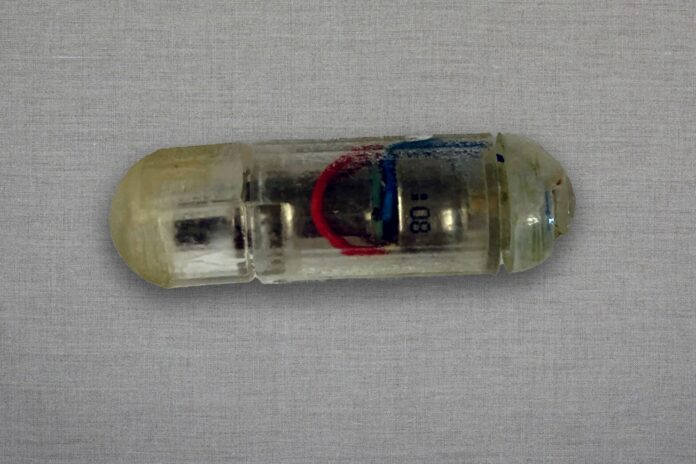“For Somebody Who Wants to Lose Weight or Control Their Appetite,” This New Pill Could Offer a Minimally Invasive Way to Treat Obesity, According to a Team of Scientists from MIT
After a big meal, your stomach tells your brain to feel full, which lets you know when it’s time to stop eating. These signals may also be sent by a stomach full of fluids, which is why dieters are typically advised to drink a glass of water before eating.
Engineers at MIT have devised an innovative method to leverage this phenomenon using an ingestible capsule designed to vibrate within the stomach. These vibrations activate stretch receptors, simulating the feeling of stomach distension and creating a deceptive sense of fullness.
In animal trials where the pill was administered 20 minutes before eating, the researchers observed a significant impact. Not only did the treatment stimulate the release of satiety-indicating hormones, but it also led to a remarkable 40 percent reduction in food intake in the animals.
While there is much to uncover about the intricacies of human body weight regulation, the researchers suggest that if subsequent studies affirm the safety and efficacy of this technology in humans, such an ingestible capsule could present a minimally invasive approach to addressing obesity.
“For somebody who wants to lose weight or control their appetite, it could be taken before each meal,” remarks lead author Shriya Srinivasan. “This could be really interesting in that it would provide an option that could minimize the side effects that we see with the other pharmacological treatments out there.”
New Pill to Control Hunger and Lose Weight
When the stomach expands, specialized mechanoreceptor cells detect the stretching and communicate with the brain through the vagus nerve.
This process triggers the production of key hormones, including insulin, C-peptide, Pyy, and GLP-1, working synergistically to aid digestion, induce a sense of fullness, and signal the cessation of eating.
Concurrently, levels of ghrelin, a hunger-promoting hormone, decrease.
Intrigued by the prospect of manipulating this natural mechanism, Srinivasan, during her time as a graduate student at MIT, explored the idea of artificially stimulating stomach mechanoreceptors through vibration.
Previous studies had demonstrated that vibration applied to muscles could create an illusion of increased stretching. The concept was to activate stretch receptors in the stomach, inducing an illusory sense of distension that could modulate hormones and influence eating patterns.
Collaborating with Traverso’s lab at MIT’s Koch Institute for Integrative Cancer Research during her postdoctoral work, Srinivasan and the research team developed a capsule, roughly the size of a multivitamin, equipped with a vibrating element.
Once in the stomach, the capsule dissolves its gelatinous membrane through gastric fluids, completing the electronic circuit and activating the vibrating motor powered by a small silver oxide battery.
In animal studies, they observed that the vibrating capsule, once activated, stimulated mechanoreceptors, triggering signals to the brain via the vagus nerve. Hormone levels mirrored those typically observed after a meal, even when the animals had fasted.
Additionally, when the pill vibrated for about 20 minutes before offering food, the animals consumed, on average, 40 percent less. The animals also exhibited slower weight gain during periods of treatment with the vibrating pill.
“The behavioral change is profound, and that’s using the endogenous system rather than any exogenous therapeutic. We have the potential to overcome some of the challenges and costs associated with delivery of biologic drugs by modulating the enteric nervous system,” adds Giovanni Traverso, senior author of the paper published today in Science Advances.
The current version of the pill vibrates for approximately 30 minutes in the stomach, with future research exploring the possibility of extending its duration and enabling wireless on-and-off control.
Notably, the animal studies showed no signs of obstruction, perforation, or adverse effects during the pill’s transit through the digestive tract, suggesting promising safety prospects for this innovative approach.
A Noninvasive Alternative in the Battle Against Obesity
In the quest to combat obesity, MIT’s innovative vibrating capsule offers a compelling alternative to current treatments, according to researchers.
Traditional interventions, including diet and exercise, often fall short, and existing medical solutions can be invasive.
Surgical procedures like gastric bypass and the use of gastric balloons, once common, have faced safety concerns, limiting their adoption in the United States.
While drugs like GLP-1 agonists can assist in weight loss, their injection-based administration and high costs pose barriers for many individuals. MIT’s vibrating capsules, as envisioned by Srinivasan, could be produced at an affordable cost, potentially expanding access to effective obesity treatment.
Srinivasan notes, “For a lot of populations, some of the more effective therapies for obesity are very costly. At scale, our device could be manufactured at a pretty cost-effective price point. I’d love to see how this would transform care and therapy for people in global health settings who may not have access to some of the more sophisticated or expensive options that are available today.”
The team is now focusing on scaling up capsule production for future human clinical trials. These trials will be crucial for assessing device safety, determining optimal timing for capsule ingestion before meals, and establishing the frequency of administration.
Collaborators on the project include Amro Alshareef, Alexandria Hwang, Ceara Byrne, Johannes Kuosmann, Keiko Ishida, Joshua Jenkins, Sabrina Liu, Wiam Abdalla Mohammed Madani, Alison Hayward, and Niora Fabian.
Funding for the research was provided by the National Institutes of Health, Novo Nordisk, the Department of Mechanical Engineering at MIT, a Schmidt Science Fellowship, and the National Science Foundation.
Source: 10.1126/sciadv.adj3003
Image Credit: Shriya Srinivasan, Giovanni Traverso, MIT News
